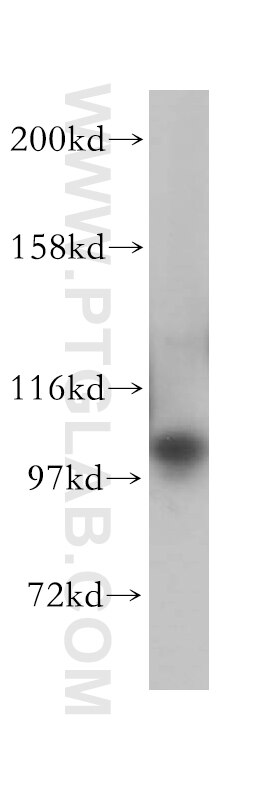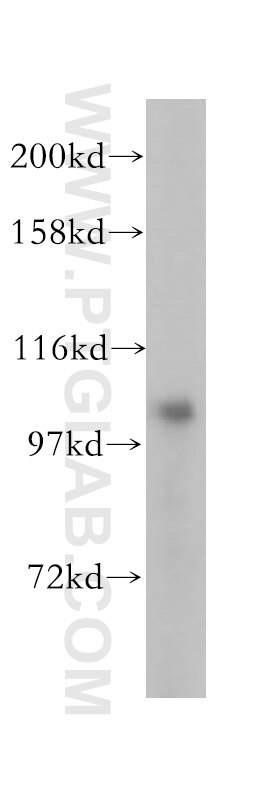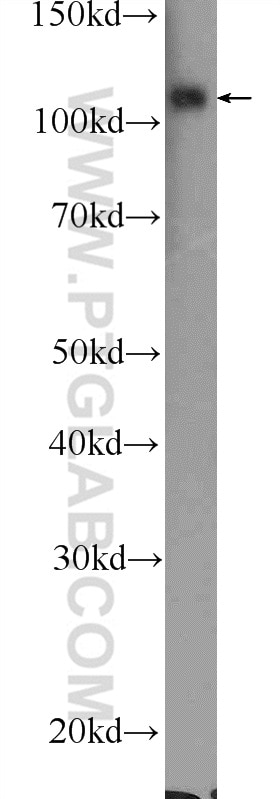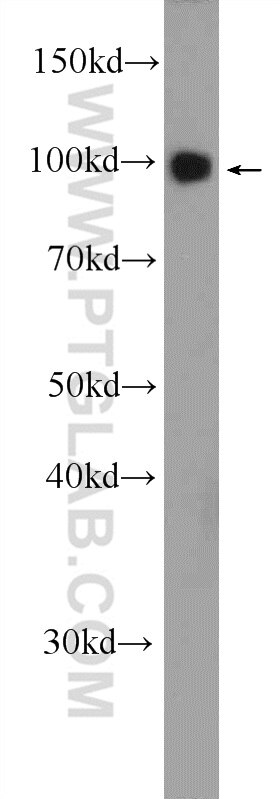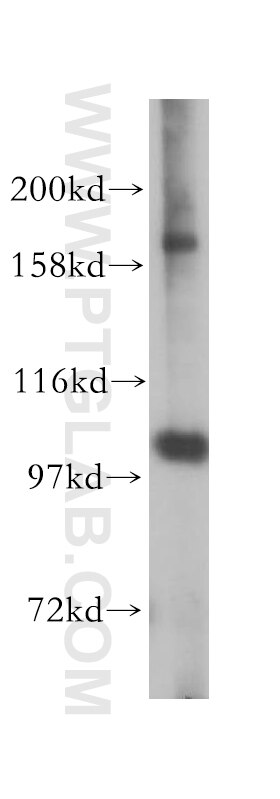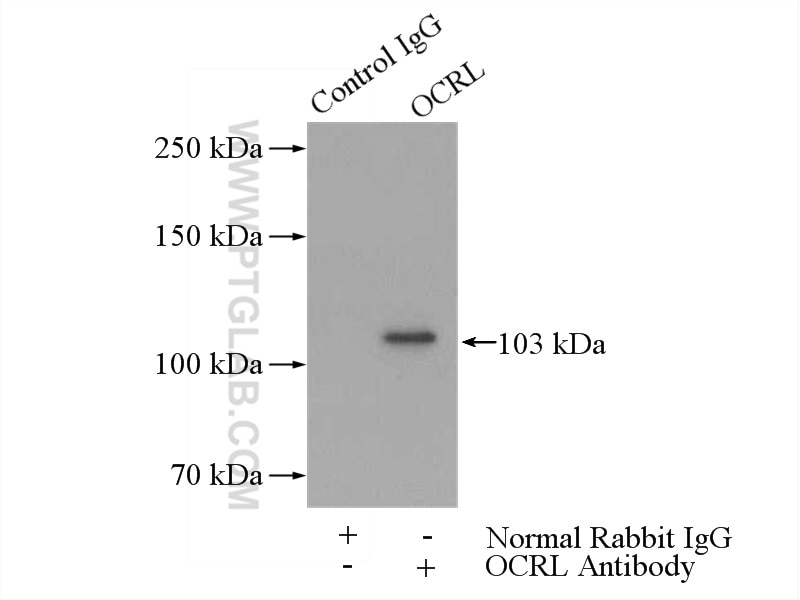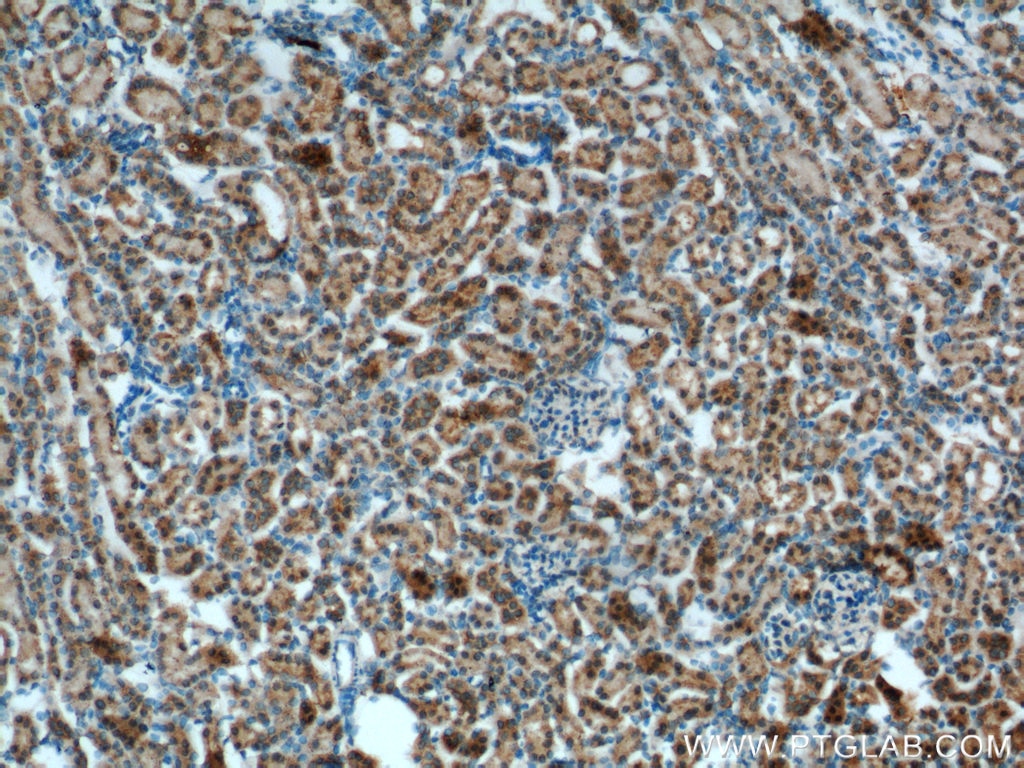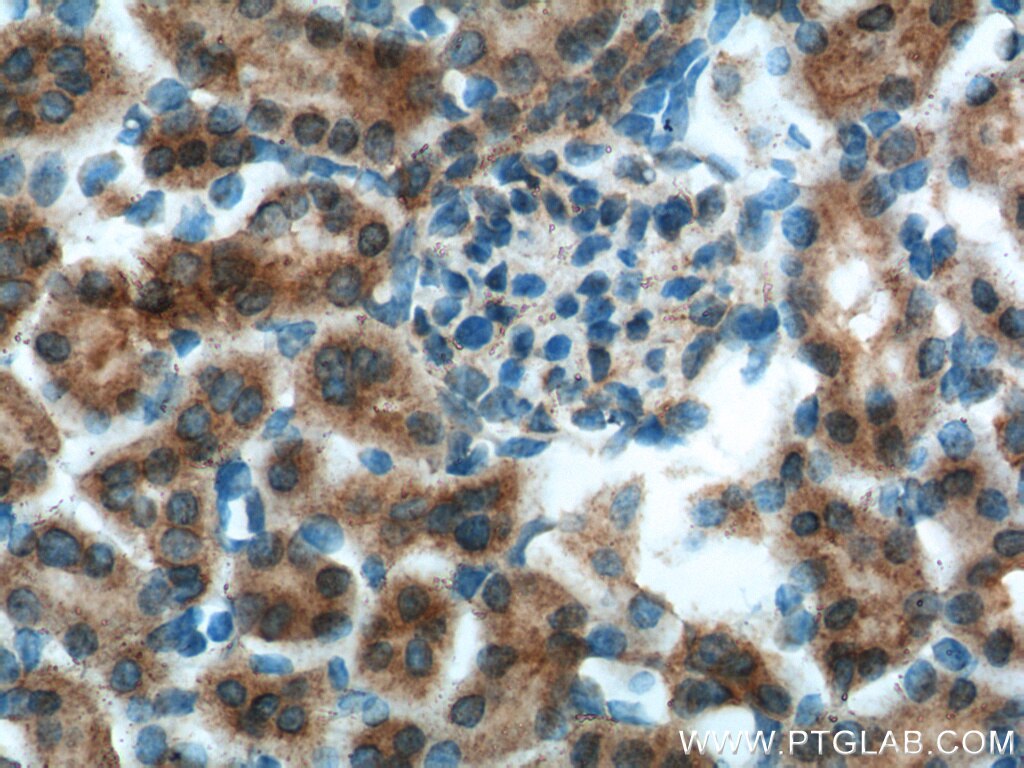Validation Data Gallery
Tested Applications
| Positive WB detected in | HeLa cells, HEK-293 cells, mouse brain tissue, rat brain tissue, SH-SY5Y cells |
| Positive IP detected in | HeLa cells |
| Positive IHC detected in | mouse kidney tissue Note: suggested antigen retrieval with TE buffer pH 9.0; (*) Alternatively, antigen retrieval may be performed with citrate buffer pH 6.0 |
Recommended dilution
| Application | Dilution |
|---|---|
| Western Blot (WB) | WB : 1:500-1:2000 |
| Immunoprecipitation (IP) | IP : 0.5-4.0 ug for 1.0-3.0 mg of total protein lysate |
| Immunohistochemistry (IHC) | IHC : 1:100-1:400 |
| It is recommended that this reagent should be titrated in each testing system to obtain optimal results. | |
| Sample-dependent, Check data in validation data gallery. | |
Published Applications
| KD/KO | See 3 publications below |
| WB | See 6 publications below |
| IHC | See 2 publications below |
| IF | See 3 publications below |
Product Information
17695-1-AP targets OCRL in WB, IHC, IF, IP, ELISA applications and shows reactivity with human, mouse, rat samples.
| Tested Reactivity | human, mouse, rat |
| Cited Reactivity | human, mouse |
| Host / Isotype | Rabbit / IgG |
| Class | Polyclonal |
| Type | Antibody |
| Immunogen |
CatNo: Ag11900 Product name: Recombinant human OCRL protein Source: e coli.-derived, PGEX-4T Tag: GST Domain: 538-893 aa of BC094726 Sequence: VDERRYRKVFEDSVRIMDRMENDFLPSLELSRREFVFENVKFRQLQKEKFQISNNGQVPCHFSFIPKLNDSQYCKPWLRAEPFEGYLEPNETVDISLDVYVSKDSVTILNSGEDKIEDILVLHLDRGKDYFLTISGNYLPSCFGTSLEALCRMKRPIREVPVTKLIDLEKSLLQMVPLDEGASERPLQVPKEIWLLVDHLFKYACHQEDLFQTPGMQEELQQIIDCLDTSIPETIPGSNHSVAEALLIFLEALPEPVICYELYQRCLDSAYDPRICRQVISQLPRCHRNVFRYLMAFLRELLKFSEYNSVNANMIATLFTSLLLRPPPNLMARQTPSDRQRAIQFLLGFLLGSEED 相同性解析による交差性が予測される生物種 |
| Full Name | oculocerebrorenal syndrome of Lowe |
| Calculated molecular weight | 893 aa, 103 kDa |
| Observed molecular weight | 105 kDa |
| GenBank accession number | BC094726 |
| Gene Symbol | OCRL |
| Gene ID (NCBI) | 4952 |
| RRID | AB_2298946 |
| Conjugate | Unconjugated |
| Form | |
| Form | Liquid |
| Purification Method | Antigen affinity purification |
| UNIPROT ID | Q01968 |
| Storage Buffer | PBS with 0.02% sodium azide and 50% glycerol{{ptg:BufferTemp}}7.3 |
| Storage Conditions | Store at -20°C. Stable for one year after shipment. Aliquoting is unnecessary for -20oC storage. |
Background Information
OCRL is also named as INPP5F, OCRL1 and belongs to the 5-phosphatase gene family and that Lowe syndrome represents an inborn error of inositol phosphate metabolism(PMID: 9430698).The protein product of the gene that when mutated is responsible for Lowe syndrome, or oculocerebrorenal syndrome (OCRL), is an inositol polyphosphate 5-phosphatase.It may function in lysosomal membrane trafficking by regulating the specific pool of phosphatidylinositol 4,5-bisphosphate that is associated with lysosomes.It has 2 isoforms produced by alternative splicing.Defects in OCRL are the cause of Lowe oculocerebrorenal syndrome (OCRL) and Dent disease type 2 (DD2).This antibody is specific to OCRL.
Protocols
| Product Specific Protocols | |
|---|---|
| IHC protocol for OCRL antibody 17695-1-AP | Download protocol |
| IP protocol for OCRL antibody 17695-1-AP | Download protocol |
| WB protocol for OCRL antibody 17695-1-AP | Download protocol |
| Standard Protocols | |
|---|---|
| Click here to view our Standard Protocols |
Publications
| Species | Application | Title |
|---|---|---|
Mol Autism Modeling the neuropsychiatric manifestations of Lowe syndrome using induced pluripotent stem cells: defective F-actin polymerization and WAVE-1 expression in neuronal cells.
| ||
Nephrol Dial Transplant Identification of novel OCRL isoforms associated with phenotypic differences between Dent disease-2 and Lowe syndrome. | ||
J Neurodev Disord Transcriptome analysis of neural progenitor cells derived from Lowe syndrome induced pluripotent stem cells: identification of candidate genes for the neurodevelopmental and eye manifestations.
| ||
BMC Med Genomics Novel pathogenic OCRL mutations and genotype-phenotype analysis of Chinese children affected by oculocerebrorenal syndrome: two cases and a literature review | ||
Cell Death Dis Rab35 and glucocorticoids regulate APP and BACE1 trafficking to modulate Aβ production.
| ||
Int J Mol Sci Dysregulation of Inositol Polyphosphate 5-Phosphatase OCRL in Alzheimer's Disease: Implications for Autophagy Dysfunction |

